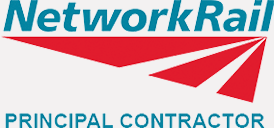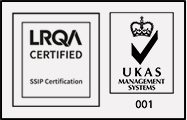A180 Railway Triangle Parapet
Full Steam Ahead for AGC
The A180 near Ulceby in Lincolnshire crosses above two railway lines along a 200-metre stretch forming the 'Railway Triangle'. The triangle connects Immingham and Grimsby docks with the rest of the country, which is strategically important in maintaining supplies of key commodities.
The essential work to replace the bridge parapets above these lines has presented a logistical and technical challenge to National Highways, the highway asset owner, for the best part of a decade. This was due to complex safety and regulatory standards required by Network Rail, the rail track asset owner, to undertake structural improvements over their asset.
The collective AGC skillsets of AmcoGiffen who have spent more than 50 years working in rail, and Carnell with three decades of experience on the strategic road network, successfully overcame the challenge created by the complex road-rail interface.
The scheme included
- Installation of four high-containment parapets, each 2.2 metres high and approximately 60 metres long
- Eight barrier transition
During the work we identified 800 metres of the surrounding corrugated steel barrier that also required replacing, we absorbed this into the programme resulting in almost 1,200 metres of vehicle restraint system (VRS) upgraded in total.
Developing The Optimum Solution
AGC worked together with local small-medium enterprise Versco to develop the most appropriate solution. One of their tailormade parapet solutions systems was identified as the best solution and was quickly tested with integral solid panel screening at the rear to National Highways specified containments.
In simple terms, the benefits of the system included a baseplate arrangement and anchorage, lightweight sections allowing manual handling and the strike-rail fixing arrangement. The solid cladding and steeple coping were added following the CD377 and BS6779-1:1998 and Network Rail requirements.
Versco also developed temporary works specifically to suit Network Rail requirements. The 1.8 metre-high solid-clad edge protection system provided a temporary situation which aligned with the permanent parapet solution, ensuring no objects could fall onto the rail track. This required several detailed desktop exercises following initial early contractor involvement including surveys of the existing parapet, stringcourse arrangement and ferro-scanning activities.

Overcoming Barriers Collaboratively
As a Scheme Delivery Framework (SDF) scheme, AGC worked closely with the client National Highways, Jacobs the Principal Designer and HW Martin Traffic Management.
AGC as the principal contractor were responsible for managing the programme and safety during the construction phase. We self-delivered the bulk of the VRS activities, with additional support from our trusted supply partners.
Behind the scenes, the unified AGC team successfully negotiated several challenges.
Collaboration with Network Rail - any work activity directly over rail tracks requires track possession. Each possession needs 16 weeks' notice and thorough justification, due to the amount of freight trains using the lines. Once accepted it was set in stone. We built and sustained excellent relationships with Network Rail ensuring the process went smoothly.
Programme Optimisation - The lead time and rigidity of rail possessions meant that our programme had to be accurate and optimised. A lot of work needed to be done between possessions, but as they also acted as hold-points, safety, customer-impact and efficiency had to be carefully balanced to give certainty of delivery without being over cautious.
Buildability – Network Rail has restrictions on mechanical lifting in the vicinity of rail lines. Installing heavy-duty, high-containment parapet without lorry-mounted cranes meant that components needed to be designed to allow manual handling during installation.
Key Roles - The Contractors Responsible Engineer (CRE) and Contractors Engineering Manager (CEM) and Delegated Responsible Person must be approved by Network Rail. AGC’s colleagues are equipped with the necessary skills, experience and qualifications (including PTS), to competently fulfil these roles and oversee the site works and manage the nine rail possessions.
Added Value – During the construction phase, AGC engineers identified that the surrounding VRS was beyond serviceable repair. Our project manager has a design background in highways and was able to support the design and approval to replace an additional 800 metres of barrier, a resource that couldn’t be provided by the principal designer in such a short timescale.
Temporary Works - Significant temporary works were coordinated by our specialist delivery team, including edge protection installed over the tracks to meet the many regulations and standards for working at height. This ensured safe working conditions and eliminated the risk of falling debris during the dismantling of the redundant system and installation of the new solution.
Engineering Solutions – Two-thirds of the original post positions for the parapet foundations were reused, however the remainder required re-drilling. Steel reinforcement within the string course of the plinth restricted this, so we engineered a solution to provide an alternative anchoring system for the parapet foundations.

Building A Track Record of Successful Delivery
AGC safely and successfully replaced four high-containment parapets which were beyond serviceable repair, overcoming numerous challenging factors. The combined expertise of our partnership successfully delivered a scheme that was historically seen as ‘too difficult to do’ due to the road-rail interface. Working collaboratively with the National Highways and Network Rail, we safely completed the project with minimal impact on customers and stakeholders, incorporating additional activities, while bringing it in under budget.
I have nothing but appreciation and commendation for the work that AGC completed on this particular scheme. A huge amount of planning in advance of the sitework in conjunction with Network Rail and the appointed Principal Designer was led by AGC to ensure a seamless and reduced risk of delivery. This level of organisation and commitment was echoed throughout the project lifecycle and resulted in an incident-free and professional conclusion to the works and the handover of all relevant close-out information in a timely duration. A very successful and well-received project all round.
John Stebbing, National Highways Project Manager, Operations Yorkshire and North East





















